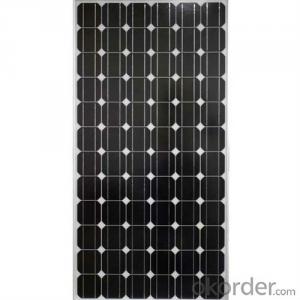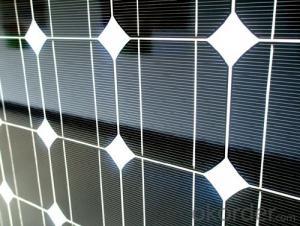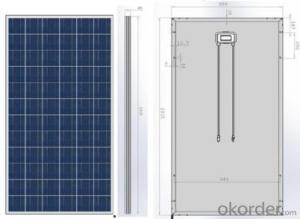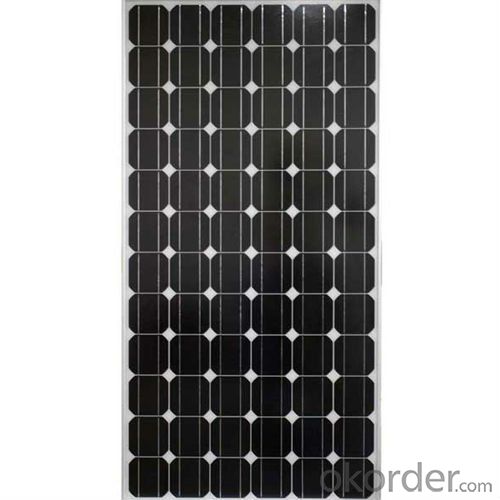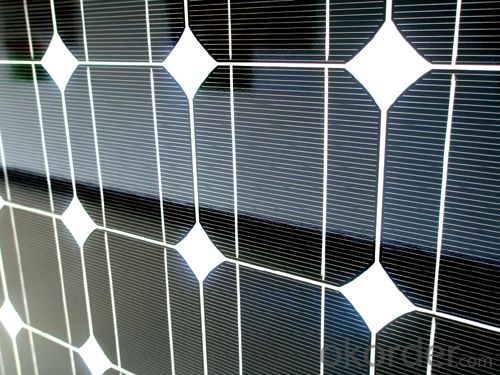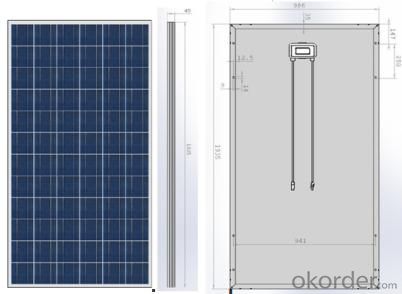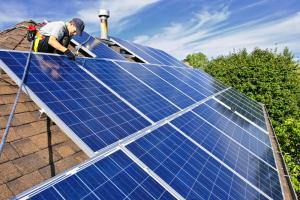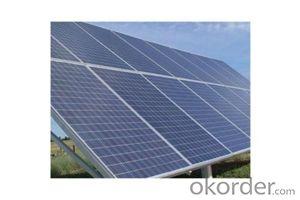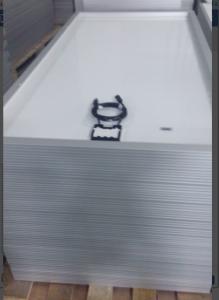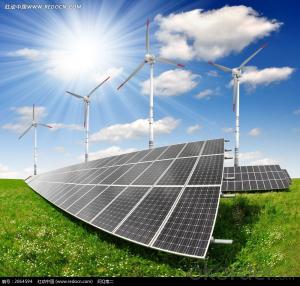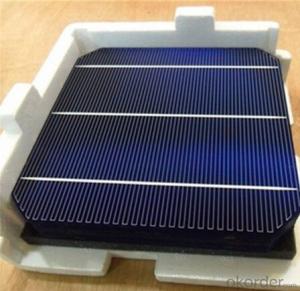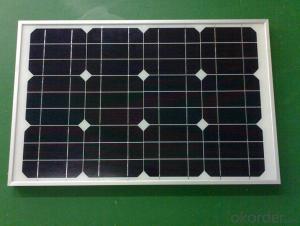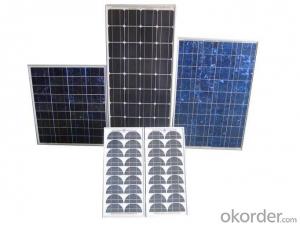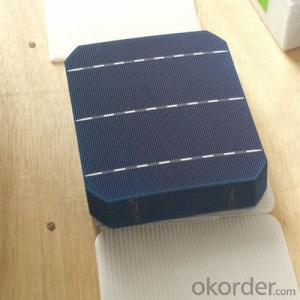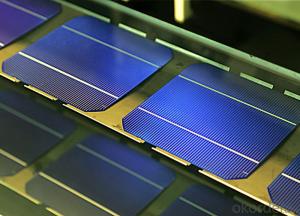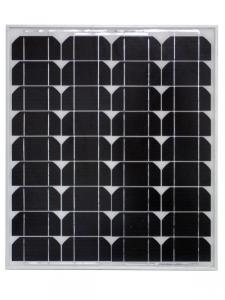Anern Solar Panels - Mono Solar Module 156*156 PV Module High Performance
- Loading Port:
- China main port
- Payment Terms:
- TT OR LC
- Min Order Qty:
- 50 pc
- Supply Capability:
- 50000 pc/month
OKorder Service Pledge
OKorder Financial Service
You Might Also Like
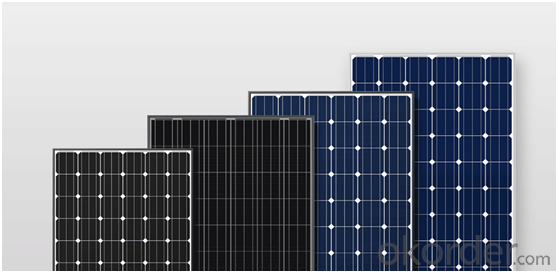
Specification:
· Highest performance enabled by higher efficiency monocrystal line cells and the latest Solar Wafer Technology for multicrystal line cells
· Lower weight design which reduces the total system load on a roof, making it ideal for residential customers. Its shape allows for better roof utilization
· Its low weight means easier handling for installers
· Modules are designed to withstand PID (Potential Induced Degradation)*
· High light transmission Anti-Reflective Glass with improved self-cleaning capability
· 0/+5 W Positive power tolerance for reliable power output
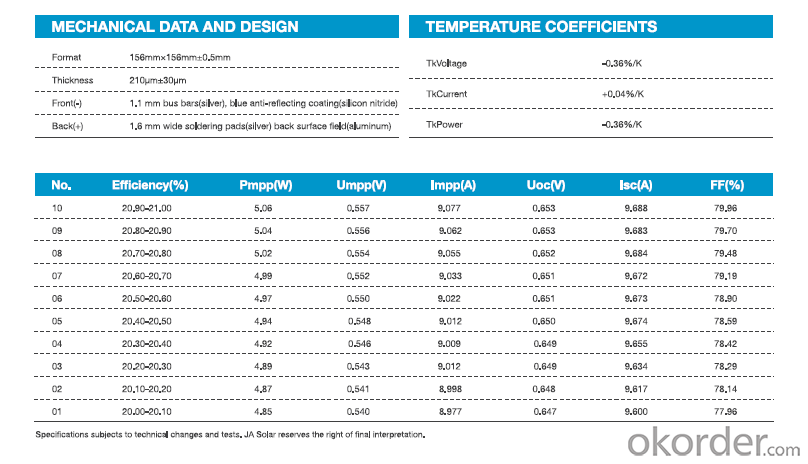
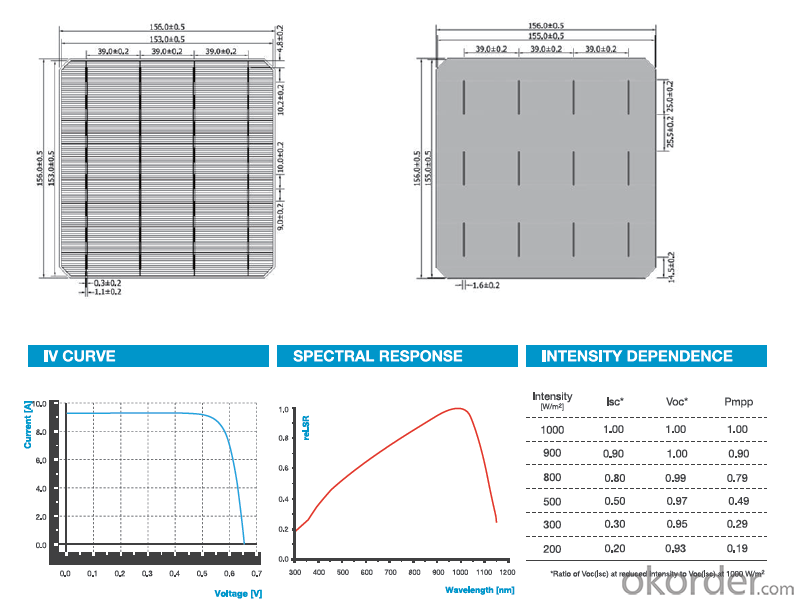
Warranty
CNBM Solar provides one of the most comprehensive module warranties in the industry:
· 10 years for product defects in materials and workmanship
· First 12 years for 90% of warranted minimum power
· Remaining 25 years for 80% of warranted minimum power
Certification
CNBM Solar strictly carries out the ISO 9001 quality control methodology and has implemented check points at every step of the production process to ensure our product performance durability and safety. The stringent quality control process has been confirmed by numerous independent agencies and LDK Solar modules earned IEC, TUV and UL certifications.
· IEC:IEC 61215, IEC 61730 (1&2), conformity to CE
· UL 1703 2002/03/15 Ed:3 Rev:2004/06/30
· ULC/ORD-C1703-01 Second Edition 2001/01/01
· UL and Canadian Standard for Safety Flat-Plate
· ISO 9001: 2008 Quality Management Systems
· CEC Listed: Modules are eligible for California Rebates
· PV Cycle: Voluntary module take back and recycling program
· MCS Certificate

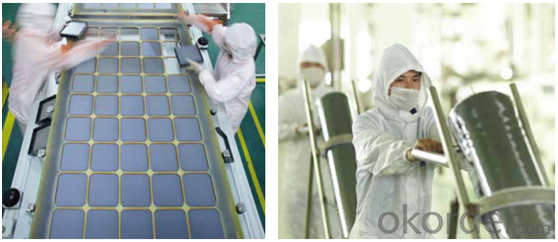
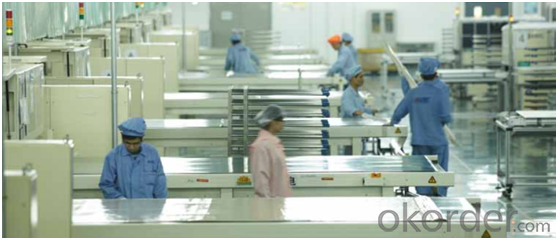
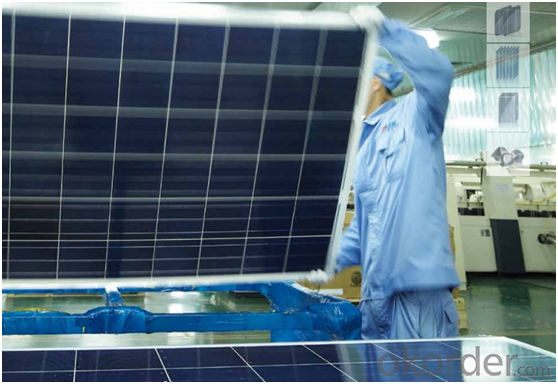
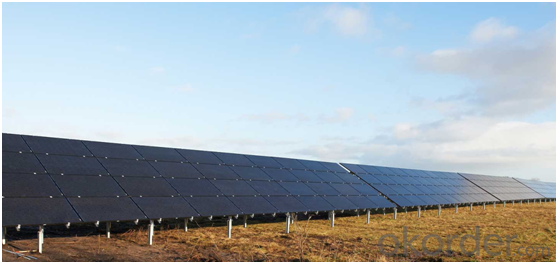
FAQ
Q: How long has Solar PV technology been around?
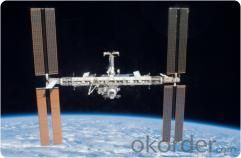 In 1838 the photoelectric effect was discovered by physicist Edmund Becquerel although it wasn't until the 1950's that the technology was developed enough to produce efficient working cells.
In 1838 the photoelectric effect was discovered by physicist Edmund Becquerel although it wasn't until the 1950's that the technology was developed enough to produce efficient working cells.
Q: Are Photovoltaic panels expensive?
Over the last 20 years the price of PV modules has fallen dramatically, from around £15 per Wpk in 1980 to current prices of around £3.50 per Wpk.
Q: Will I have to get planning permission?
Not in the vast majority of cases. However if you want your system ground mounted, if your property is part of a world heritage site, or is listed, then planning permission would likely have to be sought in advance.
Q: How long will a Solar PV system last?
The MCS accreditation scheme means that all panels installed under the scheme by approved agents will continue to generate for at least 25 years. Over this time their output will diminish slightly but they should still perform at 85% at the 25 year mark according to the scheme rules.
Q: How much Power can I expect to get from my Solar PV’s?
Typically an installed 1kWpk array will produce 800kWh/year. 2kWpk will produce 1600kWh/year and so on.
Q: How much will I get paid for the electricity I feed into the grid?
If you install a qualifying small system (1-4kWpk) in the UK before October 2012 you will get paid 16 pence for every kWh you generate regardless of whether you use it yourself or export it to other users. This is a generation tariff or feed in tariff.
Q: Is it true that I can get my electricity meter can spin backwards?
Not usually, nor is it legal to do this. The very old meters may cause this to happen however the company installing your PV will advise you if you need to ask for a meter replacement from the company supplying your electricity. This is usually free of charge.
- Q: How do solar panels affect the property's green certification?
- Solar panels can positively impact a property's green certification by enhancing its sustainability and energy efficiency. The installation of solar panels reduces reliance on non-renewable energy sources, decreases carbon emissions, and promotes the use of clean energy. This aligns with the requirements of most green certification programs, which prioritize environmental responsibility and conservation. Therefore, incorporating solar panels can contribute significantly to a property's green certification and help demonstrate its commitment to sustainable practices.
- Q: Online stores selling solar photo-voltaic generation kits gives specs indicating the power generation capability of the system. For example, Solar World Grid-Tie Solar Electric System with 245W Panels PV Powered PVP2000 Inverter, .2 to 2.4 kW. This seems to indicate that the system can generate .2 to 2.4 kW. Is that per day? Per month? I'm trying to calculate the return on investment, but can't because I don't know how much power a system such as this will generate in a month.
- That would have to be in that instant of time or they would say kilo watt hours or KWH for short. But being the sun doesn't shine at the same intensity over any given hour you couldn't say a solar panel rated at 2.4KW would produce 2.4KWH of electric in a given hour. The power produced would have to vary as clouds passed over head. The power would also be reduced on days of heavy overcast or rain/ snow.
- Q: I'm part of the Sustainability group at school, the school principal is a d**k and doesn't care about the environment, he only cares about money.Me and the group will be talking in front of him and the school council (the people in-charge of the school's money) To convince them to put solar panels on the school roofs.I know that it definitely will help the school save on electricity bills, but it WILL cost a lot of money to put them in.In the end we just wanna reduce carbon emissions!HELP :)
- When okorder / Good luck but the best way to win is to find a way to get it done and then they can't say no.
- Q: Can solar panels be installed on a parking lot or carport?
- Yes, solar panels can be installed on a parking lot or carport. In fact, these locations are ideal for solar panel installations as they provide ample space and can generate clean energy while also providing shade and protection for vehicles. This dual-purpose approach helps maximize the benefits of solar energy and optimizes land usage.
- Q: How do solar panels impact wildlife?
- Solar panels can have both positive and negative impacts on wildlife. On the positive side, solar panels provide clean and renewable energy, reducing dependence on fossil fuels and mitigating climate change, which can have indirect benefits for wildlife populations. Additionally, solar panels can create new habitats for certain species, such as birds, by providing perching and nesting opportunities. However, there are also potential negative impacts to consider. Solar farms can disrupt and fragment natural habitats, displacing or causing harm to certain species. Birds may be at risk of collision with solar panels, although proper installation and design can help mitigate this issue. To minimize these negative impacts, it is important to carefully plan and design solar projects, taking into account wildlife conservation and habitat protection measures.
- Q: I recently bought a house with very old solar panels (about 25 years old) that don't appear to work properly. They are supposed to heat the hot water heater but they don't always work, and recently have staretd leaking. So, I have had them turned off and now we're just using electricity to heat the hot water. My question is, is there any tax credit money (stimulus or otherwise) available for people to (a) repair old solar panels or (b) replace them with new ones? How does the credit work?
- Congratulations okorder /
- Q: I was thinking of having some installed on our rooftop and was wondering if it would be worth the cost? The house is located in Sac, Cali. The panels would face the sun 2 months out of the year and in the summer roughly 4 hours of straight sun.
- Solar is too expensive system. It is relatively new. Everything new is top dollar. When the market gets flooded the cost will dramatically go down as everything like cell phones, computers etc.
- Q: Dont/Cant work alone?when you buya asolar panel you mUST GET bATTERIES, voltage regulators and many else stuff?cant they just work directly? or can i use normal batteres like Car batteries?The one who Really knows 0 pts. thanks
- Solar okorder /
- Q: I have four power packs for solar lights. They have 3 AA .2volt batteries of 2450 mAh capacity installed in series for a total supply voltage of 4 volt maximum for the lights. I want to charge all four packs at once off a single 6 volt solar panel. With the four packs wired in parallel, what capacity output (wattage) panel do I need to charge the batteries in an 8 hour day?
- WIRE THEM IN PARALLEL BUT MUST VIA ONE BLOCKING DIOED FOR EACH 4V BATTERY BANK ( LIGHT) BETWEEN SOLAR PANEL OUTPUT TO EACH BATTERY BANK. DIODE USES LIKE N5404 THAT CAN HANDLE 3A OR HIGHER IS BETTER. TOTAL AH = 9.8 AH FROM ALL 4 LIGHTS. NOT 25AH FROM YOUR MISTAKE RATE. TO CHARGE THEM FULLY IN 8 HOURS, CHARGING CURRENT AT LEAST .3A BUY SOLAR PANEL HAS OUTPUT 6V 2A ( OR 0W ) IS GOOD ENOUGH.
- Q: I wanna start going green, you know like solar panels, wind turbines, etc. but where I live the companies that install the free solar panels in exchange for the subsidiaries aren't available. To start off I was just looking for a single panel I could drill into my roof and wire it to an outlet just for small thinks like charging my phone and a fan maybe. If anybody can understand my crazy idea please answer with links to where I can find these things. Thanks!
- Sounds like an electrocution in the works. Try learning about grid tied and grid free solar system first.
Send your message to us
Anern Solar Panels - Mono Solar Module 156*156 PV Module High Performance
- Loading Port:
- China main port
- Payment Terms:
- TT OR LC
- Min Order Qty:
- 50 pc
- Supply Capability:
- 50000 pc/month
OKorder Service Pledge
OKorder Financial Service
Similar products
Hot products
Hot Searches
Related keywords
